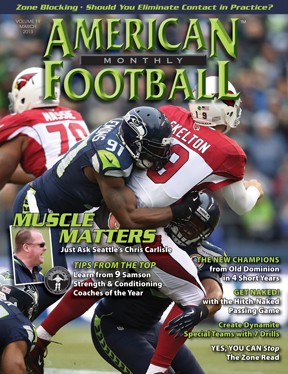Article CategoriesAFM Magazine
|
The Rise of the Monarchs – The fastest rising program in college football is just getting started.by: David Purdum© More from this issue Between 1940 and 2009, Old Dominion University did not play a single football game. Zero. The program that had been discontinued after the ’40 season was not reinstated until a 2005 vote established the framework for a new Monarchs team that would begin play in the ’09 season. Basically starting from scratch, the program would face the monumental challenge of building a team where one didn’t exist. Today, the Monarchs are headed to the Football Bowl Subdivision this fall, in only their fifth year playing Division I football. They’ll transition into Conference USA in 2014. Who knows what’s next for the most successful start-up program in FCS history. It’s been a meteoric rise for Old Dominion, one that exceeded even coach Bobby Wilder’s high expectations. The Monarchs went 38-10 in their first four seasons in the FCS. Th....The full article can only be seen by subscribers.
|
|
|||||||
| HOME |
MAGAZINE |
SUBSCRIBE | ONLINE COLUMNISTS | COACHING VIDEOS |
Copyright 2025, AmericanFootballMonthly.com
All Rights Reserved





